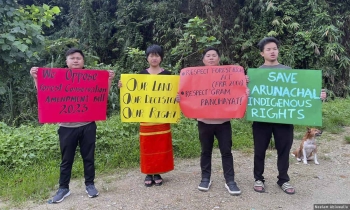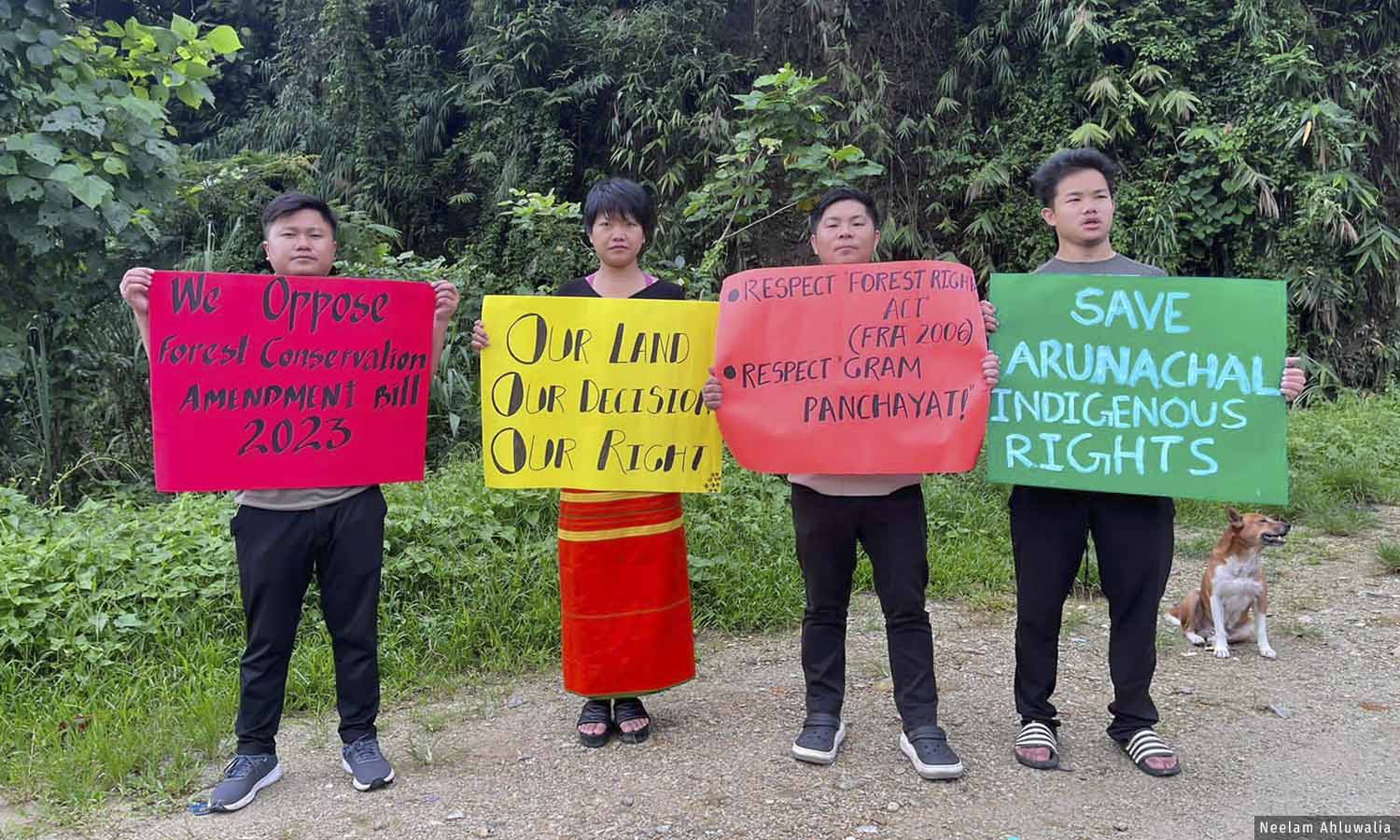
.jpg) Dr. Arun Kumar Oraon
Dr. Arun Kumar Oraon

The "Forest (Conservation) Amendment Bill 2023" was passed by Lok Sabha on July 26 and the Rajya Sabha on August 2. The Bill also covers land notified as forest under government records after the Indian Forest Act, 1927, or the 1980 Act, came into effect. The Bill includes land located within 100 km along the Indian border, which is essential for national security projects, small roadside amenities and public roads leading to the settlement. Along with this, a provision has been made under this Bill that the state government will have to get the central government's approval before giving forest land to any private institution. On the other hand, it also directs that some activities can be done in the forests, such as setting up check posts, fencing, building bridges, etc.
The Indian Forest Act, 1927, was enacted to manage timber and other forest resources. The Act allows state governments to notify any forest land they own as a reserve or conservation forest. All such lands are subject to the provisions of the Land Rights Act. The Forest (Conservation) Act 1980 was enacted to prevent large-scale deforestation. This Act provided that if the forest land has to be converted for non-forestry purposes, then the central government also needs legal approval.
Under the 1927 Act, the state government converted forest land for non-forestry purposes. The 1980 Act provides for additional prior approval from the central government. The Bill adds that this clearance will not be required when forest land is being converted for construction, including a rail line or public road maintained by the central government, to forest land around them providing access to housing, rail or roadside facilitation centre.
The maximum size of this land is 10 hectares, in addition to land located within 100 km along international borders, Line of Control or Line of Actual Control, which is proposed to be used for construction of strategic linear projects for national importance or security, as well as land up to 10 hectares for the construction of security-related infrastructure. This includes land proposed for constructing defence-related projects, camps for paramilitary forces, or public utility projects specified by the central government. At the same time, in areas of the state where the extremist Left has influence, the use of only more than five hectares of land has been banned. This exemption will be subject to the terms and conditions specified under the guidelines by the Central Government.
Such restrictions can be removed with the prior permission of the central government. Non-forestry purposes include using land for any purpose other than horticulture, cultivation of crops or reforestation. These activities include works related to the conservation, management and development of forests and wildlife, such as creating check posts, fire lines, fencing and installing wireless communications and zoos and safaris owned by the government or any other authority under the Wild Life (Protection) Act, 1972 in forest areas, eco-tourism related facilities, Silvicultural operations (growth of forests) are also included. The central government can issue instructions to the state, union territory or government-recognised organisations.
In 1996 the apex court had directed that all non-forestry activities in forests should be stopped if they are sanctioned only by the state government and not by the central government. The court had said that all such actions would violate the 1980 law. The Bill states that land converted from forest for non-forestry use before the date of judgment will be exempted from the 1980 Act. While giving this exemption, this Bill can go against the decision. The Bill provides for an exemption for diplomatic linear projects of national importance and related national security within 100 km of Indian borders, security-related infrastructure on land up to 10 hectares, defence-related projects, camps for paramilitary forces, or public convenience projects specified by the central government.
The current Bill covers a large part of the north-eastern border areas. Because the north-eastern states of India have the highest proportion of forest cover in terms of their total geographical location; most of the north-eastern states are also biodiversity hot spots. Nevertheless, in the last few years, the forest cover of the North-Eastern States has been declining due to shifting (jhum) cultivation, felling of trees, natural disasters, anthropogenic pressures and developmental activities.
The Bill’s provision for constructing security-related projects and approving the conversion of forest land within 100 km of the International Border, LoC, and LAC could lead to a sharp decline in forest cover in these areas. The 100 km distance from the international borders will cover most of these states, Sikkim with 47 per cent forest cover and Uttarakhand with 45 per cent forest cover. Tree plantations can try to compensate for this loss of forest cover, but the way it will destroy the natural habitat of forests, it will not pay for the loss of biodiversity. Additionally, linear projects can reduce the region's biodiversity beyond their footprints. Every kilometre of road can have a detrimental effect on the habitat of an area of 10 hectares.
The Bill allows the central government to specify terms and conditions for conducting specific surveys without approval. These include surveillance, prospecting, investigation or exploration, and seismic surveys. Such activities can help economic growth and contribute to national priorities regarding the prospecting of minerals, such as energy security and industrial development. Nevertheless, it is unclear why the need for case-by-case investigation by the central government for such a determination is being replaced by a broader exemption. Also, the purpose of the zoo inside the forest is not clear in the Bill. Zoos are also exempted from the condition of prior approval under the 1980 Act. The Supreme Court had said in 2023 that it did not understand the need for zoos inside tiger reserves or national parks.
The Forest (Conservation) Amendment Bill 2023 is a controversial legislation that points to the complex challenges inherent in balancing industrial development and the conservation of forests. While industrialisation essentially means grabbing large parts of forest land and ecosystems, the Forest (Conservation) Act 1980 has been such an important legislation that has empowered the state to regulate the process of industrialisation and impose compensation on such industrial exploitation. The Supreme Court in its landmark judgment in the case of T.N. Godavarman Thirumalapada case had extended the scope of such protection even to forests that were not officially classified. At the same time, the biennial report of the Forest Survey of India shows that India's forest area has seen only a very slight increase.
The spread of forest cover within officially recorded forests is stagnant; it is the tree cover in orchards, plantations and village homes that is growing and complementing India's claim that 24% of its area is under forest and tree cover. India has committed to increase this figure to 33% by 2030 as part of its international commitments on climate, thereby reducing 2.5 billion to 3 billion tonnes of carbon dioxide to the carbon sink.
This amendment effectively means that states can no longer classify unclassified forest land, or parts of trees with forest-like characteristics, as 'forest land'. Without central approval, the amendments also allow forest land up to 100 km close to India's borders to be appropriated for "strategic and security" purposes. The primary criticism of these amendments is that they do not contribute to reviving natural forests but encourage deforestation for commercial purposes.
(The writer is a Research Associate, Indian Social Institute, New Delhi)